NASA’s Artemis program officially aims to put two people on the moon in 2025. For this purpose, the SpaceX lunar module, nicknamed the Moon Ship, will be used, which will carry two NASA astronauts – at least one of whom is a woman – from the Orion spacecraft to the moon. But where will this lunar module from the Artemis III mission get to? Although the landing site has not yet been officially approved, NASA has been studying potential candidates for years, the vast majority at the Moon’s south pole. The goal of studying Antarctica, as it is known, is to take advantage of “or control” the reserves of water ice that lie under the regolith, especially in areas that remain permanently in the shade. However, the south pole of the moon has many characteristics of its own. The first is lighting: just as there are areas where sunlight never reaches, there are others that are permanently lit – the so-called «The islands of light»-. Between these two extremes are other areas that remain lit or shaded during certain time periods throughout the lunar day.
Obviously, a constantly lit area is a good option because we can land at any time, but we also have to take into account other factors, such as communications. There are parts of the South Pole that lie on the far side or where the Earth is sometimes lower than the local horizon due to the influence of vibrations, which requires the use of relay satellites (such as the Chinese Queqiao satellite responsible for communications with the Chang’e 4 probe, located on the far side) . And what are the most suitable places in Antarctica? Well, the preferred candidate, especially for the first manned mission, is the rim of Shackleton crater. Specifically, the geographic South Pole is located on the edge of this crater with a diameter of 21 km, but by chance, two candidate sites for the landing of Artemis I are located near this crater.
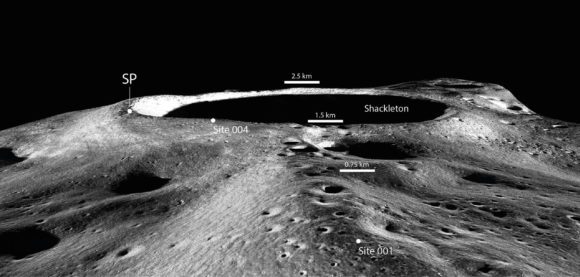
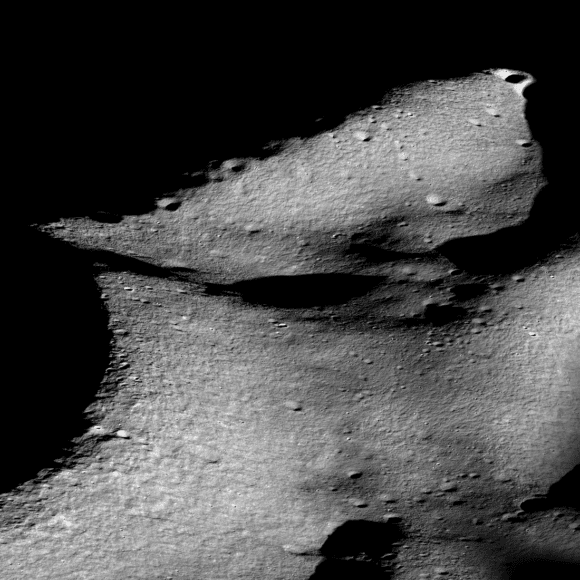
The first is an area on the edge of Shackleton itself at 1,700m, known as Site 004, which has an average solar illuminance of 85% or higher (the Antarctic illuminance is very sensitive to altitude). from Earth). The second is Site 001, located at an altitude of 1,900 metres, on the Shackleton-de-Gerlach mountain range joining the two symmetrical Faustins and having an average illumination of 89% (the most illuminated area in the entire Antarctic.). But, as mentioned, lighting is one factor to consider. This region is also characterized by the ability to maintain the Earth’s line of sight for most of the lunar day. On the other hand, other parameters relate to the fit of the landing area, which, according to NASA specifications, should not exceed a slope of 8 degrees, and it is logical that it should contain a few large rocks. Additionally, there is also a limitation on the future xEVA lunar walking suit, which cannot be used on slopes greater than 20 degrees, and will have at least 8 hours of life support (although EVAs will last about six hours each hour, as in Apollo). On the other hand, for safety reasons, the distance from astronauts to the lunar module on the first landing mission should not exceed 1.38 km, a number dictated by the need to return to the module and press the lock in less than one hour in the event of an emergency, assuming a travel speed Astronauts 2 km / h.
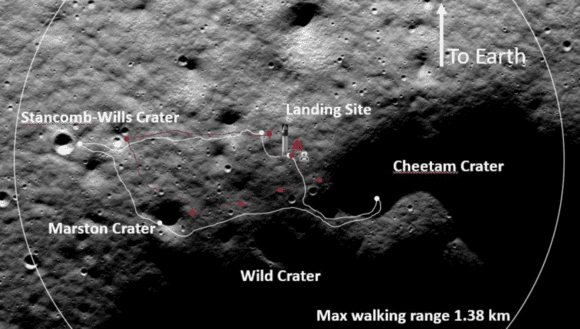
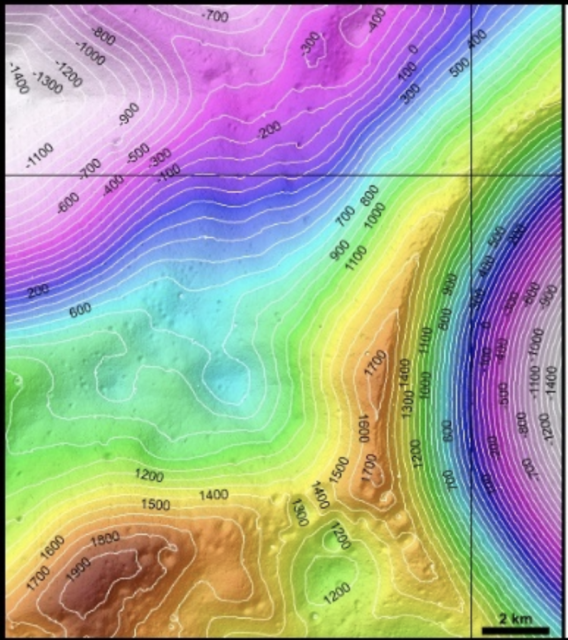
With these requirements in mind, the exact landing site may not exactly match the 001 or 004 sites, but it may be relatively close. In this sense, the Shackleton-de-Gerlach mountain range appears to present more diversity in candidate sites than the crater rim. In addition, there are several permanently shaded areas on the summit that are more accessible than on the bottom of Shackleton, so it is a good opportunity to study the presence of volatiles in these areas. During the approximately six days that the astronauts of the Artemis III mission will be on the moon’s surface, they will be able to perform various extravehicular activities on the hills to explore the different types of terrain and rocks that can be seen in the images of the LRO probe. Although the moon landing in 2025 is overly optimistic, it is very likely that during this decade we will see humans wandering around Shackleton Crater or the Shackleton-de-Gerlach mountain range. The question is who will reach the United States first or? China?
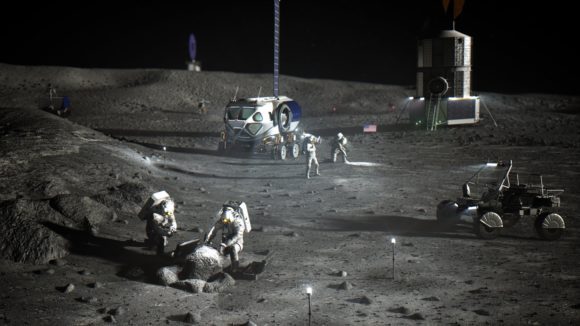
References:
- https://www.hou.usra.edu/meetings/lpsc2022/pdf/1079.pdf
- https://www.sciencedirect.com/science/article/abs/pii/S0019103522000835
- https://www.hou.usra.edu/meetings/lpsc2022/pdf/1637.pdf
- https://www.hou.usra.edu/meetings/lpsc2022/pdf/1906.pdf
- https://www.hou.usra.edu/meetings/lpsc2020/pdf/1482.pdf
- https://www.hou.usra.edu/meetings/lunarsurface2020/pdf/5082.pdf
- https://ars.els-cdn.com/content/image/1-s2.0-S0019103522000835-mmc2.pdf

“Beer enthusiast. Subtly charming alcohol junkie. Wannabe internet buff. Typical pop culture lover.”




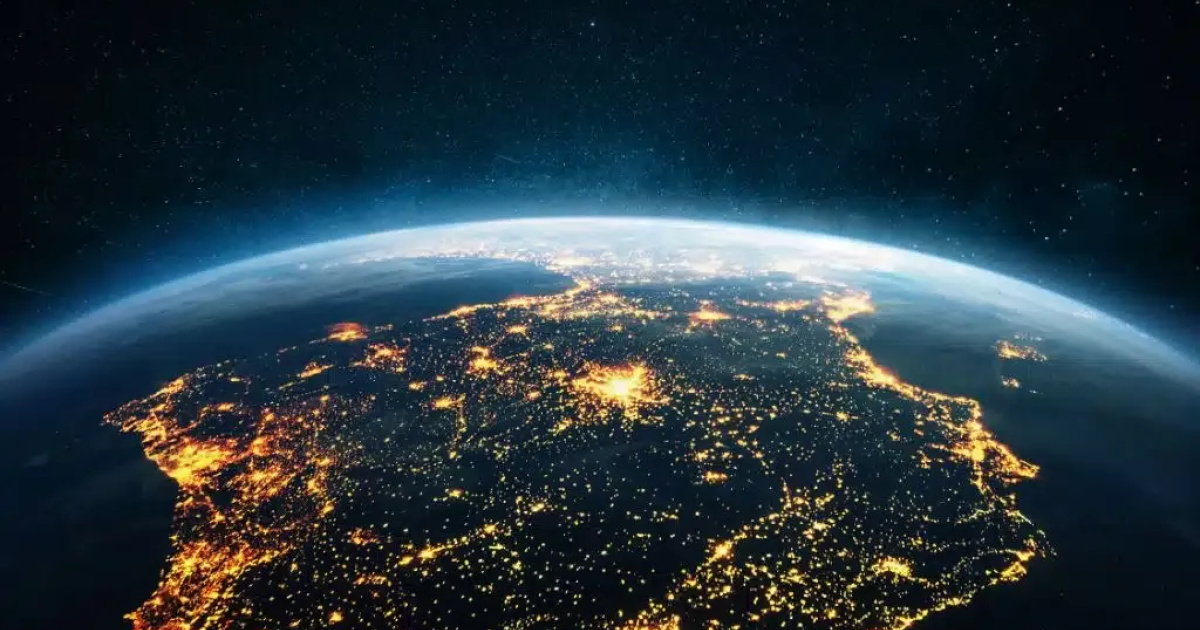

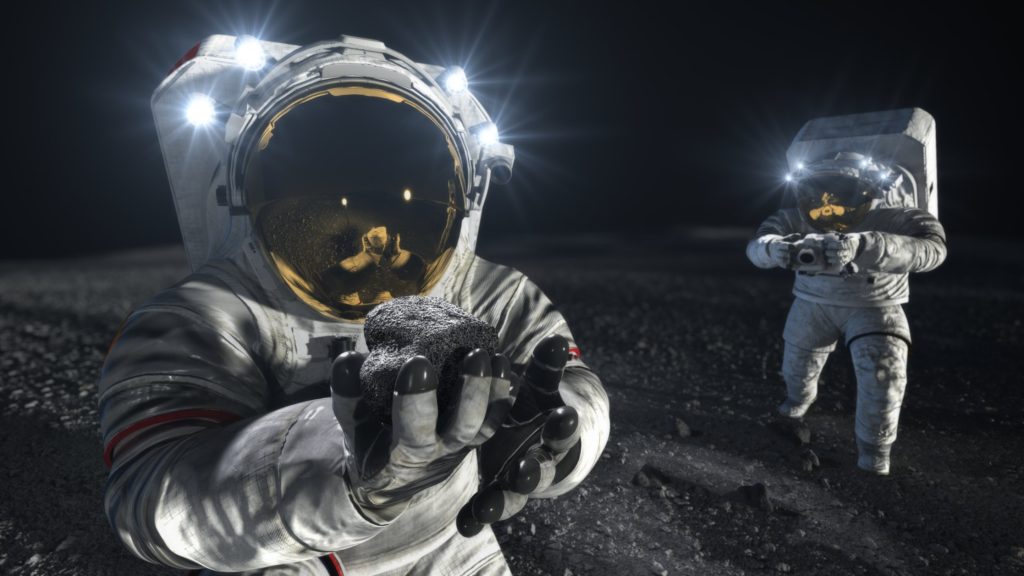
More Stories
The only human structure that can be seen from space is in Spain
Ubisoft announced that the free trial of Assassin's Creed Mirage will be available until the end of the month
Do you have reminders saved in Google Keep? They could disappear soon